Annual event celebrates the industry’s pioneer spirit, points to the path forward
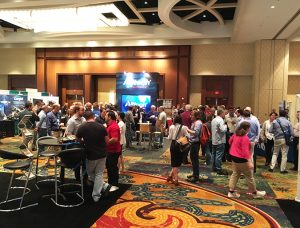
U.S. aquaculture is complex, fragmented with multiple disciplines and dimensions, and in need of better communication. That was Dr. Jonathan Van Senten’s message to attendees of Aquaculture America 2017, which was held in San Antonio, in February.
The event’s keynote speaker urged the industry to hone its message to younger consumers, known as Millennials, using social media and infographics.
“Millenials were born to technology, and we must leverage this to better communicated with them,” he said. “Millenials will soon be the major consumers of aquaculture products. A rising tide lifts all boats. Together we can move aquaculture forward,” Van Senten concluded.
Dr. Aoife Lyons, Alltech’s director of educational initiatives and engagement, also discussed communication across generations and the implications for sustainability. She explained that a better understanding of our work force, how we support our industry by funding innovative research and how we communicate the value of our products is essential to “Forging New Frontiers” in aquaculture.
Lyons discussed how various age groups perceive things differently: “By 2025, 75 percent of the workforce will be Millenials, and they have different views of leadership, feedback and ethics, and we must understand this in regards to how we are communicating to others about aquaculture,” she said.
New technologies aid U.S. catfish industry
One of the most successful U.S. aquaculture sectors is catfish, but it is an industry experiencing declining production.
Jimmy Avery of Mississippi State University said that since reaching its peak at 79,626 hectares in production in 2002, the amount of pond space decreased to 25,309 hectares in 2016. The annual rate of decrease has slowed dramatically over the last few years with some new ponds being built in 2016. This renewed interest is attributed to record live fish prices and lower feed prices.
Fortunately, producers have increased yield per hectare by adopting new technologies, such as increased aeration rates, which have led to improved feed conversion ratios. Hybrid catfish (channel catfish females bred with blue catfish males) are now estimated to comprise 50 percent of the catfish produced. And producers continue to switch traditional ponds to improved production systems such as intensively aerated small ponds and split-ponds.
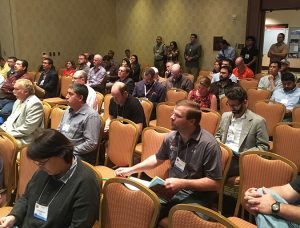
“The use of hybrid catfish in the improved production systems has resulted in per-hectare yield increases of 10 percent to 200 percent on some farms,” Avery said. Despite improvements in fish price and productivity, the industry continues to face several challenges, including a petition with the U.S. Fish and Wildlife Service, filed by an NGO, to list 43 fish and crustacean species as “injurious wildlife” under the Lacey Act.
“Blue catfish is one of the species proposed, and the listing would prohibit the interstate transport of live animals or hybrids and would have a dramatic negative impact on the already declining U.S. industry,” said Avery.
RAS technology promising, but needs perspective
Dr. John A. Hargreaves of Aquaculture Assessments in San Antonio talked about finding proper places for recirculating aquaculture systems (RAS). The skewed misperception that recirculating aquaculture plays an outsized role in contributing to global seafood production is rather pervasive among the general public and the environmental NGO community, which considers the RAS approach to be environmentally friendly.
“This myopic view is based on the capacity of RAS to address certain environmental impacts associated with shrimp or salmon farming. However, RAS is very energy intensive, resulting in increased carbon footprint per unit production relative to most other production systems,” he said.
Hargreaves argued that the community of aquaculture professionals needs to be responsible to investors, environmentalists and the general public in describing the advantages and disadvantages of RAS technology.
“A balanced and comprehensive perspective about what RAS can and cannot do can foster a realistic outlook and thereby serve to promote further commercial applications of this promising production technology,” he said.
Biofloc technology remains in focus
Dr. Andrew J. Ray (Kentucky State University in Frankfort, Ky.) discussed the integration of biofloc systems with organic plant production and renewable energy in the context of the KSU Land Grant Program and the High Tunnel Complex it developed on its campus, which includes biofloc fish tanks.
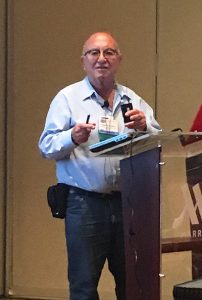
High tunnels are simple greenhouses, typically constructed using steel hoops and wood-framed end walls with transparent plastic sheeting strewn over them to help contain solar energy. Current research projects include organic horticulture trials comparing high-tunnel production to open-field production, aquaculture trials and aquaculture effluent fertilization experiments.
Aquaculture projects have examined the production of tilapia in biofloc systems during the warm months using low-energy artificial lighting to supplement sunlight and augment algal productivity. Next, cool water fish will be grown to evaluate whether pond stocker-size fish can be produced for a spring harvest. Reclaimed filtrate from the settling chambers and fractionators on the fish tanks is being assessed for its nutritional quality as an aquatic feed ingredient. This material is also being evaluated as a soil amendment for terrestrial crop production.
“Research being conducted at the KSU High Tunnel Complex focuses on the sustainable integration of plant and fish production, thereby augmenting the efficiency and productivity of food production systems,” he said.
Thomas W. Tierney (also of KSU) reported on a comparison of biofloc, clearwater and hybrid culture systems for intensive shrimp (L. vannamei) nursery production. Nursery systems are a common phase in shrimp production that can enhance biosecurity, allow better quantification of animals and utilize space more efficiently. However, it is unclear what type of RAS is most appropriate for indoor shrimp nurseries.
This research compared three system types, defined by different filtration: clear-water RAS, biofloc systems and hybrid systems. At about the halfway point of his research, Tierney said there were no significant differences in ammonia and nitrite concentrations between the treatments. However, nitrate concentration was significantly greater in the hybrid tanks than in tanks from the other treatments. Mean individual shrimp weight was significantly greater in the biofloc treatment.
“These results indicate that differences in system design can have significant impacts on water quality and nursery shrimp production, suggesting that producers should carefully consider what type of system may best suit their production goals,” said Tierney.
Arizona team reports EHP in Latin America, discusses shrimp disease diagnostics
Dr. Jee Eun Han and colleagues at the University of Arizona (Tucson, Ariz.) described diagnostic techniques using fecal samples for non-lethal screening of acute hepatopancreatic necrosis disease (AHPND) in shrimp. Her most recent findings were reported in the Advocate last month.
In order to determine the infection level of AHPND in live shrimp, animals need to be sacrificed to get the hepatopancreas, the main organ affected by bacteria. However, most farmers hesitate to lose valuable animals, especially in the case of broodstock. In their research, the disease was successfully detected in the tested fecal samples by the polymerase chain reaction (PCR) assays with either a DNA extraction or a broth enrichment procedure.
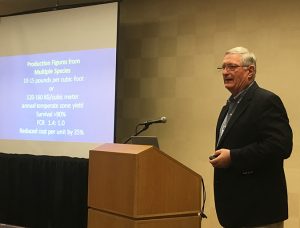
“When comparing the procedures, the broth enrichment of the fecal sample is the ideal procedure for PCR, because it shows more sensitive results and is a more cost/labor-saving technique. Also, these feces samples collected from the AHPND infected shrimp are infectious and able to transfer disease to specific-pathogen free Penaeus vannamei shrimp, which is important for the disease control in shrimp farms,” she said.
Dr. Kathy Tang reported on the histopathology and in situ detection of the microsporidian EHP in P. vannamei cultured in Latin America. EHP is an intracellular, spore-forming parasite that has become a critical threat to the shrimp farming industry in Southeast Asia.
This study describes the first case of EHP-infected Penaeus vannamei cultured in Latin America. Its histopathology is very similar to that of Southeast Asia EHP, with infected shrimp showing basophilic inclusions in tissue of the hepatopancreas. Results suggest that this Latin America EHP is a unique isolate, and not a recently introduced isolate from Southeast Asia.
“The emergence of EHP in the Western Hemisphere will have a significant impact on the shrimp production if it spreads to other farms within the region. As infection with EHP at early stages does not exhibit obvious clinical signs and the spores can persist in the environment, the potential for the rapid spread of this parasite is high. Therefore, the shrimp cultured within the region should be monitored closely for the presence of EHP,” she stated.

Dr. Luis F. Aranguren discussed biosecurity and the relevance of the Proficiency Test (PT). Most shrimp operations rely mainly on the diagnostic technique of PCR because of its high sensitive and specificity for shrimp-pathogen detection. Based on the importance of having a reliable diagnostic lab results, it is important to inter-calibrate the performance with a reliable laboratory.
One of the purposes of inter-laboratory performance testing, also known as a ring test, is to assure the clients or regulatory agencies that the results are accurate, specific and reproducible. The University of Arizona’s Aquaculture Pathology Laboratory is a World Organisation for Animal Health (OIE) reference laboratory, and provides training and assistance to other shrimp diagnostic laboratories for the detection of shrimp pathogens through the use PCR testing.
“Since 2005, various laboratories from all over the world have actively participated in this inter-calibration ring test process. For the ring test in February 2017, the emerging disease (EHP) will be included in addition to the panel set of pathogens, including WSSV, TSV, IMNV, IHHNV, YHV & NHP-B,” he said.
Dr. Tang gave a talk on dense populations of the microsporidian Enterocytozoon hepatopenaei (EHP) in feces of Penaeus vannamei exhibiting white feces syndrome and pathways of their transmission to healthy shrimp.
The white feces syndrome is an emerging issue for many shrimp farmers farming in Southeast Asia, China, and India. Its occurrence is usually first evidenced by the appearance of white fecal strings on the surface of the ponds. Gross signs of affected shrimp include the appearance of a whitish hindgut and loose carapaces, and it is associated with reduced feeding and growth reduction.
In samples from affected farms in Indonesia, authors found densely packed spores of the microsporidian EHP and relatively fewer numbers of rod-shaped bacteria. From white feces syndrome-infected ponds, hepatopancreas samples showed that all shrimp examined were infected with EHP accompanied by septic hepatopancreatic necrosis. Midgut epithelial cells were also infected and this increased the number of tissue types being affected by EHP. By PCR, EHP was detected in the samples, with a 100 percent prevalence, from WFS-affected ponds but not in those sampled from healthy shrimp ponds.
To determine the modes of transmission for this parasite, authors performed feeding and commingling bioassays, and the results showed that EHP can be transmitted through feeding of EHP-infected hepatopancreas tissues to healthy shrimp and through commingling of infected and healthy shrimp. In addition, the use of the antimicrobial agent Fumagillin-B was ineffective in either reducing or eliminating EHP in infected shrimp, she reported.
Improved capability for larval nutrition research
Peter Van Wyk of Zeigler Bros. in Gardners, Pa., reported on the development and operation of a replicated laboratory scale system for shrimp larval nutrition research. The mass cultivation of penaeid larvae has been the foundation for rapid growth of global shrimp farming, he said.
“Successful cultivation of shrimp larvae requires careful management of a variety of prepared feeds along with live algae, live or frozen artemia nauplii and/or live feed replacements,” he said. “Despite the overwhelming importance of proper nutrition and feed management, limited information is available for hatchery managers on precise nutritional requirements and comparative commercial feed performance by larval stage.”
Much of the larval nutrition research to date has been run in small or medium-scale systems where replication was very low and/or the research systems bore limited resemblance to commercial scale systems, he added.
Progress in promoting seafood consumption
Dr. Nick V.C. Ralston (University of North Dakota in Grand Forks, N.D.) discussed the health benefits of selenium, fish consumption and the prevention of mercury toxicity, and reported that there has been progress in our understanding of mercury biochemistry.
His research group recently completed an Environmental Protection Agency-sponsored study of mercury and selenium contents in more 14,000 ocean and freshwater fish samples collected from all over North America.
“We just completed a NOAA-funded international round-robin study to compare the selenium analysis capabilities of laboratories. This is important since mercury risks are entirely dependent on the relative amounts of mercury and selenium present in the foods that are being consumed,” he said.
“Our EPA-sponsored work also funded further development of the Health Benefit Value, the only reliably accurate criteria for assessing risks associated with mercury exposures as well as beneficial effects associated with improved dietary intakes of selenium, long-chain omega-3 fatty acids and other essential nutrients,” said Ralston.
Dr. David C. Love (Johns Hopkins University, Baltimore, Md.) discussed how aquaculture and the federal government can help meet public health goals for seafood consumption by working with supply chain partners and other federal agencies that focus on seafood access and use across the food system.
Americans purchase seafood based on taste preference, cost and health, and a variety of social factors such as age, income and gender also influence purchasing. U.S. health professionals recommend adults eat two to three seafood meals per week of a wide range of species (Dietary Guidelines for Americans 2015). Research indicates that eating fish improves childhood development and reduces the risk of cardiac death in individuals with pre-existing coronary heart disease.
“Americans, however, consistently eat much less seafood than recommended, with the lowest rates of consumption among pregnant and breastfeeding women, children, the elderly and individuals with low incomes,” he said.
The aquaculture industry and NOAA play important roles in increasing aquaculture production; however, production alone is not sufficient to meet goals for seafood consumption. Aquaculture producers and NOAA need to work across the supply chain and in other parts of the food system to advocate for improving consumer access.
“Opportunities include farm-to-school programs, engaging with institutional food procurement programs and more interaction between aquaculture producers, consumer groups, public health professionals and civil society organizations,” he said.
Roy Palmer (Association of International Seafood Professionals, Victoria, Australia) discussed promoting seafood consumption as a tool for improving nutrition, health and regional development, public policy and producers efforts.
Benefits to human health associated with the consumption of seafood are noted for multiple bodily organs and physiological functions. Seafood compares favorably with other protein sources in all areas but importantly it offers superior macronutrients in the ideal form of lean proteins combined with healthy omega-3 long chain polyunsaturated fatty acids, and a wide array of highly bioavailable micronutrients and vitamins.
Palmer said Mexico created a public policy to increase seafood consumption in the country by 3 kg per person per year over five years – and it achieved the goal in just three.
“Increasing seafood consumption is an imperative but changing habits is difficult so it is important for the aquaculture industry and others to consider steps to support the great advantage that the health marketing angle gives seafood and how this is backed by scientific research,” Palmer stated.
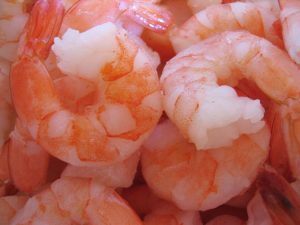
In my own contribution with Palmer about the facts of shrimp and cholesterol, we mentioned that many people, including health-conscious consumers, are concerned about the cholesterol content of foods such as meat, eggs and dairy products.
It has long been promoted by many in the health community that shrimp is bad for your health due to the high level of cholesterol. This has been challenged through a number of excellent scientific studies but unfortunately misperceptions persist.
“Shrimp is a low-fat food with a rich content of highly unsaturated fatty acids, which lead to the formation of high density lipids, commonly known as ‘good cholesterol.’ Consuming shrimp may actually lower blood cholesterol levels,” said Palmer.
Aquaculture America 2017 (held in San Antonio, Texas, from Feb. 19-22), was sponsored by the U.S. Aquaculture Society, the National Aquaculture Association and the Aquaculture Suppliers Association. As the premier Aquaculture Convention in the United States, it provided a forum bringing together research and industry, as well as 14 aquaculture organizations from around the country.
More than 1,600 people participated in the meeting, which featured a Federal Town Hall, producer meetings, several diverse technical sessions, educational workshops, a large and comprehensive tradeshow, and opportunities to network and learn about the latest aquaculture research and technologies.
Now that you've reached the end of the article ...
… please consider supporting GSA’s mission to advance responsible seafood practices through education, advocacy and third-party assurances. The Advocate aims to document the evolution of responsible seafood practices and share the expansive knowledge of our vast network of contributors.
By becoming a Global Seafood Alliance member, you’re ensuring that all of the pre-competitive work we do through member benefits, resources and events can continue. Individual membership costs just $50 a year.
Not a GSA member? Join us.
Author
-

Darryl E. Jory, Ph.D.
Editor Emeritus
Global Aquaculture Alliance[103,114,111,46,101,99,110,97,105,108,108,97,97,103,64,121,114,111,106,46,108,121,114,114,97,100]
Tagged With
Related Posts

Intelligence
Aquaculture 2016: Examining the industry’s role in the food system
A wide range of important topics was discussed at the Aquaculture 2016 conference and trade show in Las Vegas last week. Editor Emeritus Darryl Jory shares his notes from the four-day event, which occurs every three years.
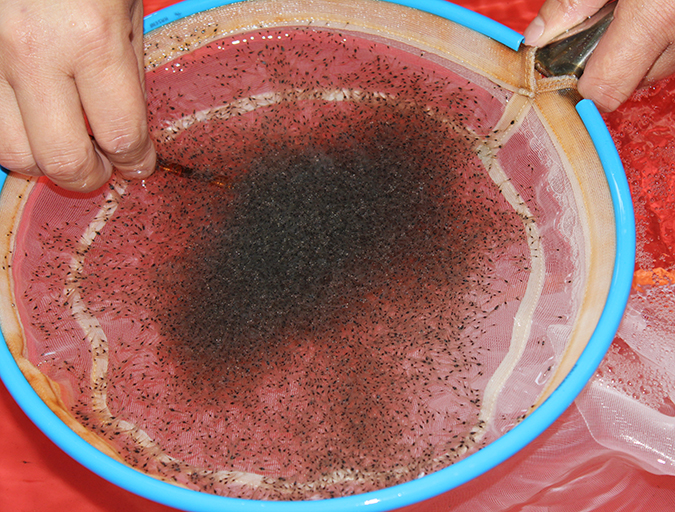
Health & Welfare
Acclimating shrimp postlarvae before pond stocking
Shrimp postlarvae acclimation before stocking into the various growout systems (ponds, raceways, tanks) is a critical – and often overlooked, sometimes taken for granted – step in the shrimp culture process. Various water quality parameters should be changed slowly so that the young shrimp have the time to gradually adapt to the new conditions.
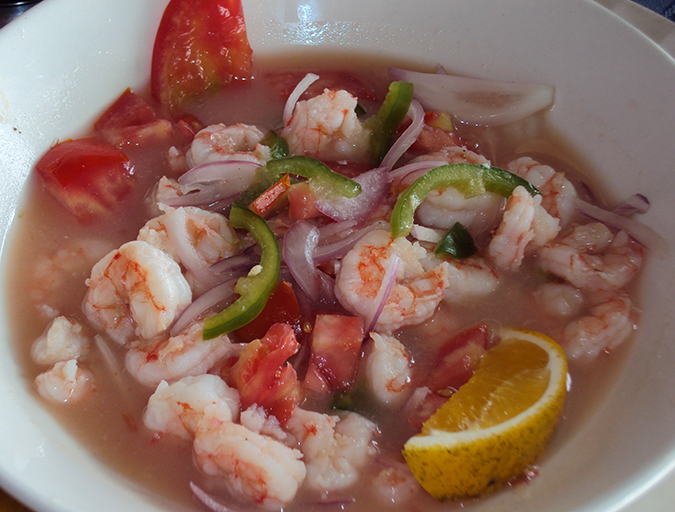
Intelligence
Facts about shrimp and cholesterol
Many people, including health-conscious consumers, are concerned about the cholesterol content of foods such as meat, eggs and dairy products. In the case of shrimp, the cholesterol story is different because a number of research studies have demonstrated that the high percentage of “good fats” in shrimp reduce the impact of cholesterol, and that a majority of people can eat shrimp as part of a balanced diet.
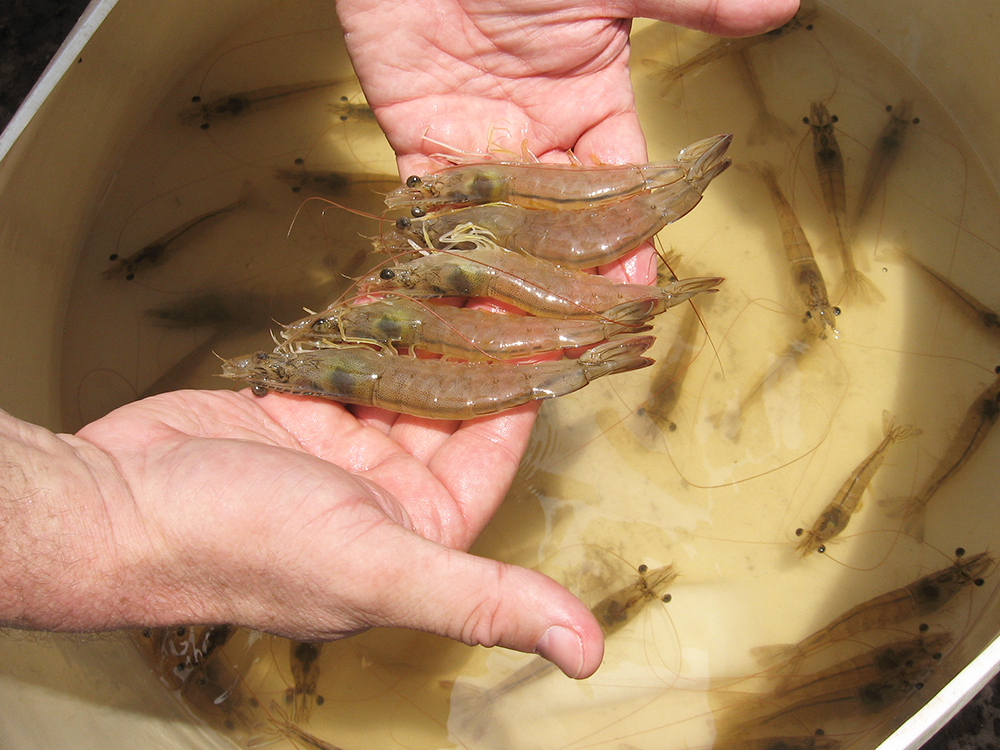
Intelligence
We can grow better shrimp, and in better ways
The recent Central American Aquaculture Symposium in Choluteca, Honduras, brought together more than 600 participants to discuss industry issues and perspectives. The focus was shrimp diseases and their impacts on production, as well as practical alternatives to face these issues and move forward.


